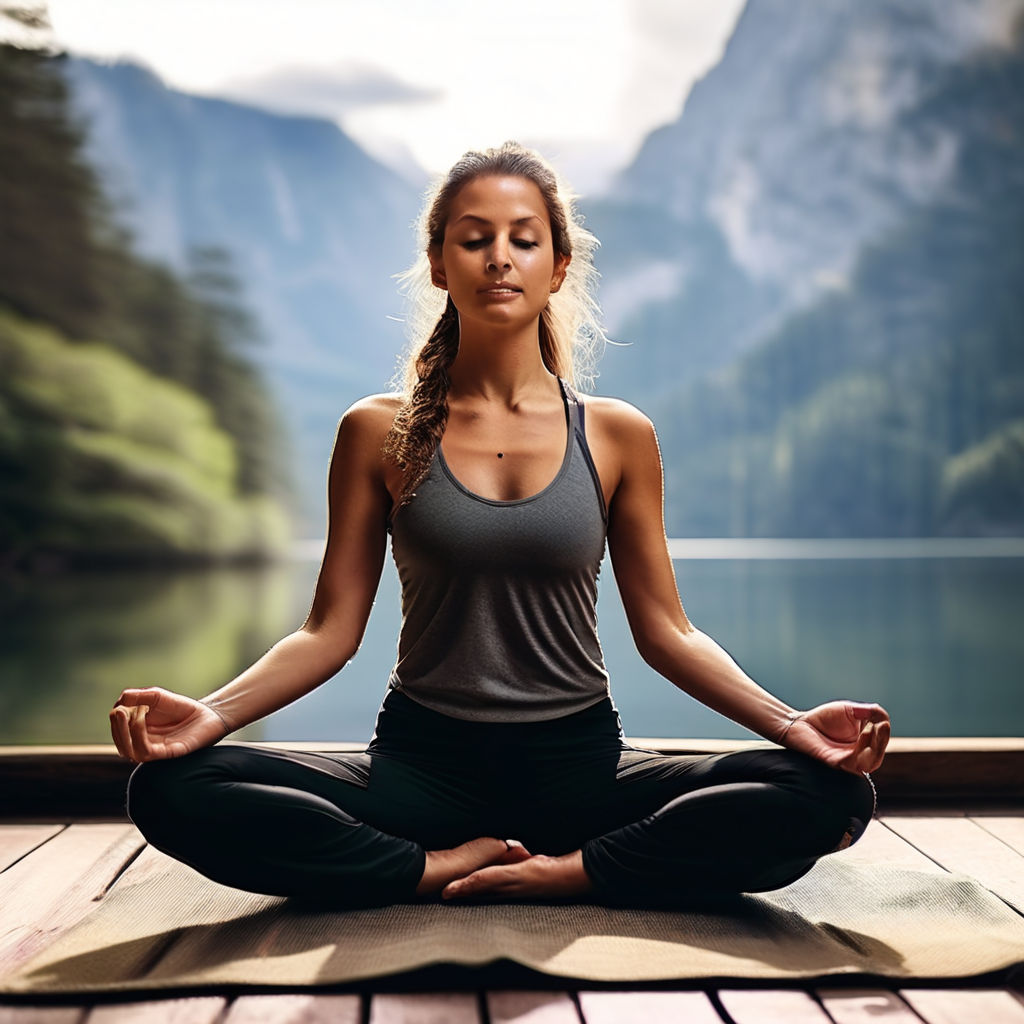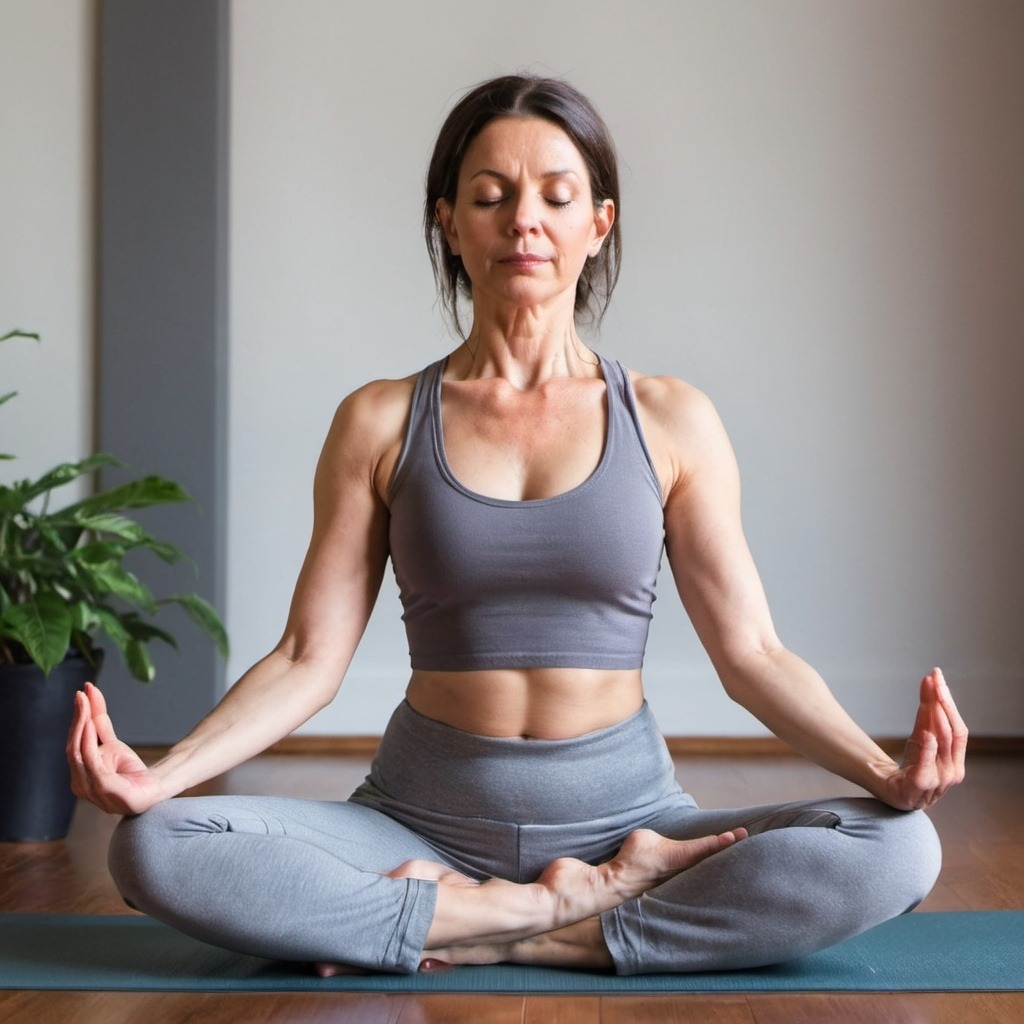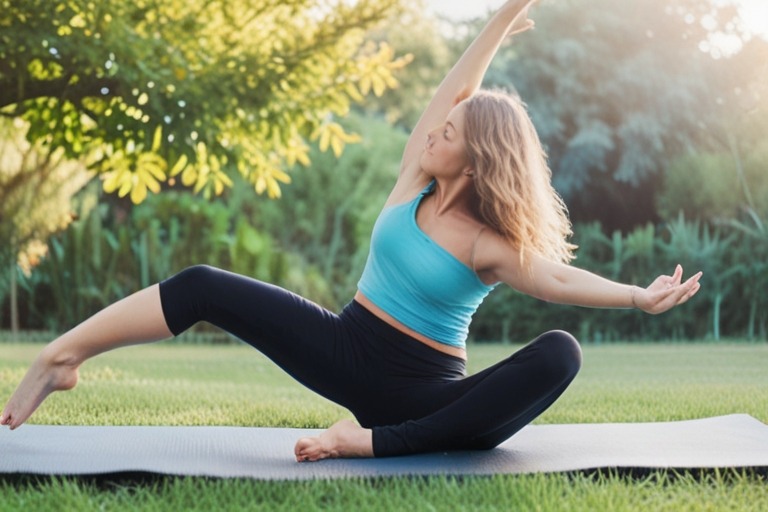
In today’s fast-paced world, stress has become a ubiquitous part of life. A recent survey revealed that nearly 77% of Americans regularly experience physical symptoms caused by stress, while 73% report psychological symptoms. These numbers underscore the pressing need for effective stress management strategies. From workplace pressures to personal challenges, stress infiltrates every aspect of our lives, often leaving us feeling overwhelmed and exhausted.
Enter yoga, a practice that has been embraced for centuries for its myriad health benefits. Beyond its physical aspects, yoga offers a comprehensive approach to mental and emotional well-being. By integrating breath control, meditation, and physical postures, yoga provides a holistic solution to stress relief. This ancient practice is not just about flexibility and strength; it is about creating harmony between the mind, body, and spirit. Yoga’s unique ability to address the root causes of stress makes it an invaluable tool for achieving lasting peace and balance in our hectic lives.
The Science Behind Yoga and Stress Relief
Understanding Stress
Stress is a natural response to perceived threats or challenges, triggering a cascade of physiological reactions known as the “fight or flight” response. When stressed, our bodies release hormones like cortisol and adrenaline, which increase heart rate, blood pressure, and energy supplies. While this response is essential for survival, chronic stress can lead to various health issues, including anxiety, depression, cardiovascular diseases, and weakened immune function. The mind also suffers, as prolonged stress can impair cognitive function, memory, and emotional regulation.
Yoga and the Nervous System
Yoga profoundly impacts the parasympathetic nervous system, often referred to as the “rest and digest” system. This system counteracts the stress response, promoting relaxation and recovery. Through specific breathing techniques (pranayama), meditation, and physical postures (asanas), yoga activates the parasympathetic nervous system, reducing heart rate and blood pressure, and fostering a state of calm. For instance, deep, controlled breathing can signal the brain to relax, thereby decreasing the production of stress hormones. Additionally, the mindfulness aspect of yoga helps in shifting focus away from stressors, providing mental clarity and emotional stability.
Scientific Studies
Numerous scientific studies validate yoga’s effectiveness in reducing stress. Research published in the Journal of Alternative and Complementary Medicine found that participants who practiced yoga regularly experienced significant reductions in cortisol levels, the body’s primary stress hormone. Another study in the Journal of Psychiatric Practice highlighted that yoga could reduce symptoms of anxiety and depression in individuals with high-stress levels. Furthermore, a review in the Frontiers in Psychiatry journal concluded that yoga could enhance overall mental health by improving mood and emotional regulation. These studies underscore yoga’s role as a powerful tool for managing stress, offering both immediate relief and long-term benefits.
For more information on the scientific research supporting yoga’s benefits, you can explore this comprehensive review of yoga and mental health.
Key Yoga Practices for Stress Relief
Breathing Techniques (Pranayama)
One of the foundational aspects of yoga for stress relief is pranayama, the practice of controlled breathing. Specific breathing exercises can significantly calm the mind and reduce stress. One effective technique is Nadi Shodhana or Alternate Nostril Breathing. This practice involves inhaling through one nostril, holding the breath, and then exhaling through the opposite nostril. It helps balance the nervous system and promotes relaxation. Another powerful technique is Ujjayi Breath, often called the “ocean breath,” where you breathe deeply through your nose with a slight constriction in the back of your throat, creating a soothing sound that aids in calming the mind and reducing anxiety.
Meditation and Mindfulness
Meditation is a core component of yoga that plays a crucial role in stress reduction. It involves focusing the mind and eliminating the stream of jumbled thoughts that may crowd the mind and cause stress. Mindfulness Meditation is particularly effective, as it encourages staying present and fully engaging with the current moment without judgment. This practice helps in breaking the cycle of chronic stress by fostering a sense of calm and clarity. Loving-Kindness Meditation is another beneficial technique, where practitioners focus on sending thoughts of love and compassion to themselves and others, which can enhance emotional resilience and reduce stress.
Physical Poses (Asanas)
Certain yoga poses, or asanas, are especially beneficial for alleviating stress. Here are a few beginner-friendly poses:
- Child’s Pose (Balasana): This gentle pose stretches the lower back and promotes relaxation by calming the mind and relieving tension in the body. It’s a great way to rest and reset during a yoga session.
- Legs-Up-the-Wall Pose (Viparita Karani): This restorative pose involves lying on your back with your legs extended up against a wall. It helps reduce stress and anxiety by improving circulation and promoting relaxation.
- Cat-Cow Pose (Marjaryasana-Bitilasana): This dynamic combination of two poses involves arching and rounding the spine. It helps to release tension in the spine and improve flexibility, which can reduce stress and increase mental clarity.
- Corpse Pose (Savasana): Often practiced at the end of a yoga session, this pose involves lying flat on your back and consciously relaxing every part of your body. It allows the body and mind to enter a deep state of relaxation, helping to release stress and rejuvenate the system.
Incorporating these breathing techniques, meditation practices, and physical poses into your daily routine can create a powerful toolkit for managing and reducing stress. Yoga’s holistic approach not only addresses the physical symptoms of stress but also nurtures mental and emotional well-being, providing a comprehensive path to tranquility and balance.
Creating a Personal Yoga Routine
Daily Practice Tips
Incorporating yoga into your daily routine can be a transformative experience, but it requires a thoughtful approach to ensure consistency and effectiveness. Start by setting aside a specific time each day for your practice. Early mornings are ideal as they set a positive tone for the day, but find a time that works best for your schedule. Begin with short sessions, perhaps 10-15 minutes, and gradually increase the duration as you become more comfortable. Create a dedicated space for your practice—this could be a quiet corner of your home where you can roll out your mat and practice without distractions. Remember to listen to your body and be gentle with yourself, especially if you are new to yoga. Incorporate a mix of breathing exercises, meditation, and physical poses to create a balanced routine.
Balancing Act
While yoga is a powerful tool for stress relief, it’s beneficial to combine it with other stress-relief activities to create a well-rounded approach to wellness. Consider integrating practices such as walking, journaling, or listening to calming music into your routine. For example, a brisk walk in nature can complement your yoga practice by providing fresh air and a change of scenery, which can enhance your overall sense of well-being. Journaling can help you process thoughts and emotions that arise during your yoga sessions, providing a deeper level of emotional release. Combining yoga with these activities can create a synergistic effect, amplifying the stress-relief benefits.
Consistency is Key
The true benefits of yoga for stress relief are realized through regular and consistent practice. It’s essential to commit to your routine, even on days when you feel too busy or unmotivated. Consistency helps build a habit, making it easier to maintain your practice over the long term. To stay motivated, set realistic goals and track your progress. Celebrate small milestones, such as completing a week of daily practice or mastering a challenging pose. Remember that yoga is not about perfection but about progress and self-care. Regular practice can lead to significant improvements in your mental and physical health, helping you manage stress more effectively and enhancing your overall quality of life.
Success Stories
Real-Life Examples
Sarah, a 35-year-old marketing executive, found herself overwhelmed by the pressures of her high-stakes job. Constantly stressed and struggling to sleep, she decided to try yoga as a last resort. Starting with simple breathing exercises and gentle poses, Sarah gradually incorporated yoga nidra, a deeply relaxing practice often referred to as “yogic sleep.” Practicing yoga nidra allowed her to unwind fully, lying in a comfortable position on the floor with her neck supported and her body completely relaxed. Over time, she noticed significant improvements in her sleep quality and a reduction in her overall stress levels. Sarah’s commitment to a regular yoga routine transformed her life, helping her manage work-related stress more effectively and improving her overall well-being.
John, a 50-year-old teacher, faced chronic stress and anxiety after a series of personal and professional setbacks. He began practicing yoga to regain balance in his life. Focusing on restorative poses and meditation, John found that spending time on the floor in supported poses, such as with a bolster under his side or neck, helped alleviate physical tension and mental stress. He attributes his improved mood and reduced anxiety to the consistent practice of yoga, which became a vital part of his daily routine.
Expert Insights
Yoga instructors and mental health professionals frequently emphasize the transformative power of yoga for stress relief. Lisa, a certified yoga instructor with over a decade of experience, shares her insights: “Yoga nidra is particularly effective for stress management because it guides you into a state of deep relaxation, allowing the body and mind to reset. It’s like hitting the reset button on your nervous system, reducing the negative effects of stress and improving sleep quality.”
Dr. Mark Thompson, a psychologist specializing in stress management, also highlights the benefits of yoga: “Regular yoga practice can help mitigate the negative impact of stress on the body and mind. The combination of physical movement, breath control, and mindfulness helps regulate the stress response, promoting relaxation and emotional resilience. Poses that involve lying on the floor with support under the neck or side can be especially calming, making yoga a versatile tool for stress relief.”
Resources for Further Exploration
Books and Videos
For those new to yoga, a wealth of resources is available to help you get started and deepen your practice. Books can provide a solid foundation, offering detailed explanations of poses, breathing techniques, and the philosophy behind yoga. A highly recommended book for beginners is “The Heart of Yoga: Developing a Personal Practice” by T.K.V. Desikachar. This book offers comprehensive insights into yoga’s principles and practical guidance for creating a personal practice.
Another excellent resource is “Yoga for Beginners: Simple Yoga Poses to Calm Your Mind and Strengthen Your Body” by Cory Martin. This book is tailored for those starting their yoga journey, with clear instructions and illustrations that make it easy to follow along. For a deeper dive into the mental and emotional benefits of yoga, “The Relaxation and Stress Reduction Workbook” by Martha Davis, Elizabeth Robbins Eshelman, and Matthew McKay offers a blend of yoga and other relaxation techniques.
Videos are also an invaluable resource, providing visual and auditory guidance that can enhance your learning experience. YouTube channels such as Yoga with Adriene offer a plethora of free classes for all levels. Adriene’s “Yoga for Stress Relief” series is particularly beneficial for those looking to alleviate stress through yoga. Additionally, Yoga International and Gaia provide extensive libraries of yoga videos, including specialized programs for stress relief.
Finding a Class
Whether you prefer in-person or virtual classes, finding the right yoga class tailored to stress relief can make a significant difference in your practice. Start by exploring local yoga studios and community centers, which often offer classes specifically focused on relaxation and stress reduction. Many studios provide introductory packages or free first classes, allowing you to try different instructors and styles to find what resonates with you.
If you prefer the convenience of practicing at home, virtual yoga classes are an excellent option. Platforms like YogaGlo, MyYogaWorks, and Alo Moves offer a wide range of online classes that you can access anytime, anywhere. These platforms often categorize classes by level, duration, and focus, making it easy to find sessions dedicated to stress relief. Additionally, many yoga studios have transitioned to offering live-streamed classes, providing the communal experience of a traditional class from the comfort of your home.
Apps and Tools

Incorporating yoga into your daily routine can be made easier with the help of various apps and tools designed to support your practice. Here are some useful apps that can aid in maintaining a consistent yoga practice:
- Down Dog: This app offers customizable yoga practices, allowing you to choose the length, level, and focus of your session. The soothing voice guidance and varied routines help keep your practice fresh and engaging.
- Yoga Studio: With a library of over 170 video classes and a pose guide featuring detailed instructions and benefits, this app is a comprehensive resource for yogis of all levels. The app also offers meditation and breathing sessions tailored to stress relief.
- Headspace: While primarily known for its meditation resources, Headspace also offers yoga and mindfulness exercises designed to reduce stress and improve overall
well-being. The guided sessions are easy to follow and integrate seamlessly into your daily routine.
- Calm: This popular app provides guided meditations, sleep stories, and gentle movement exercises, including yoga sessions aimed at relaxation and stress relief. The app’s holistic approach to mental well-being makes it a valuable tool for managing stress.
- Insight Timer: This app offers thousands of free guided meditations, including sessions focused on yoga and breathwork. The community feature allows you to connect with other practitioners, fostering a sense of support and accountability.
By leveraging these resources-books, videos, classes, and apps-you can build a comprehensive and sustainable yoga practice that supports stress relief and enhances your overall quality of life. Whether you’re a beginner or looking to deepen your practice, these tools provide the guidance and inspiration needed to make yoga an integral part of your wellness routine.
